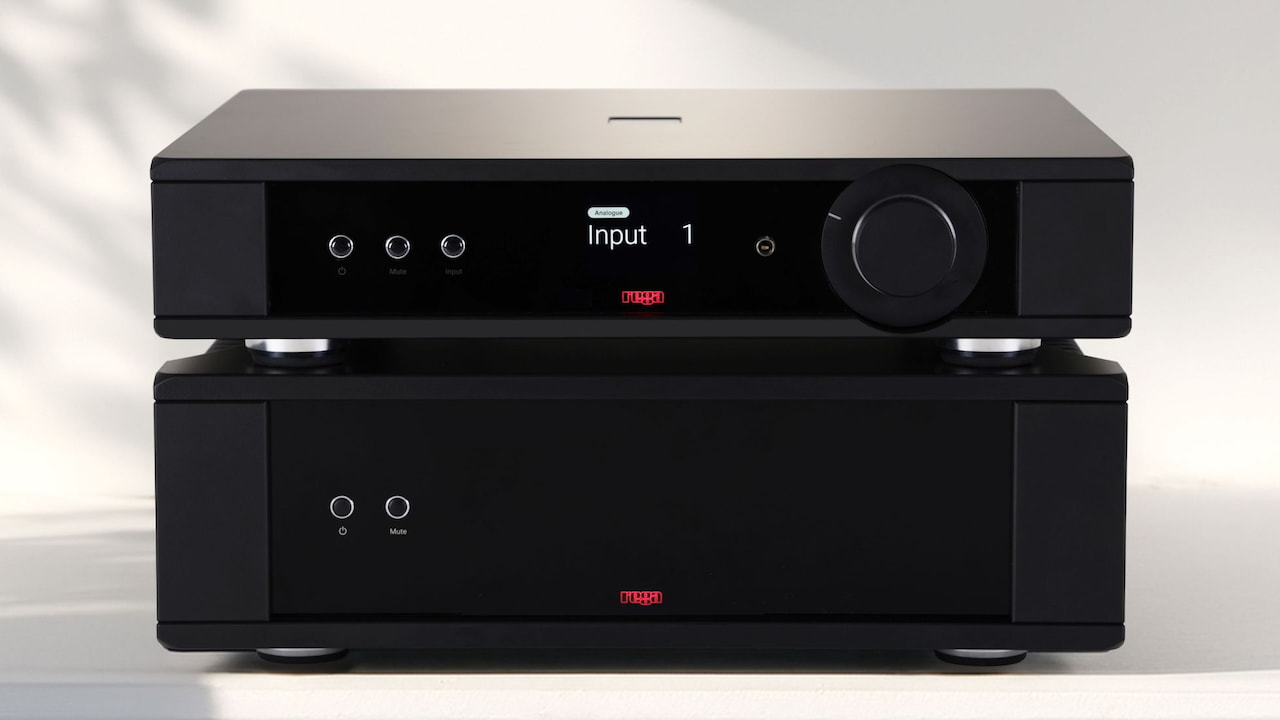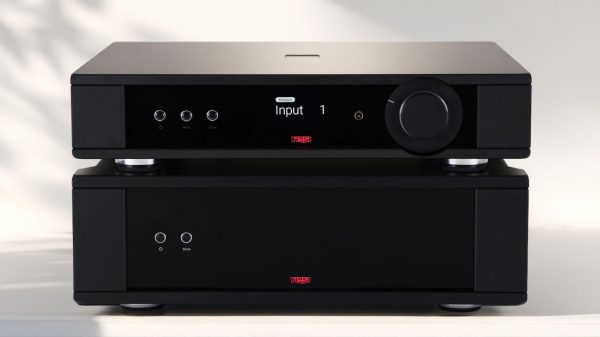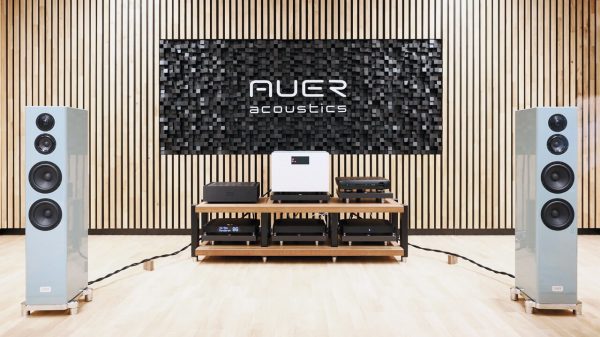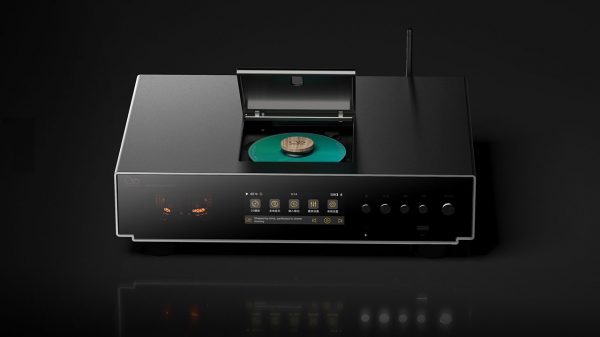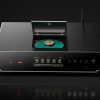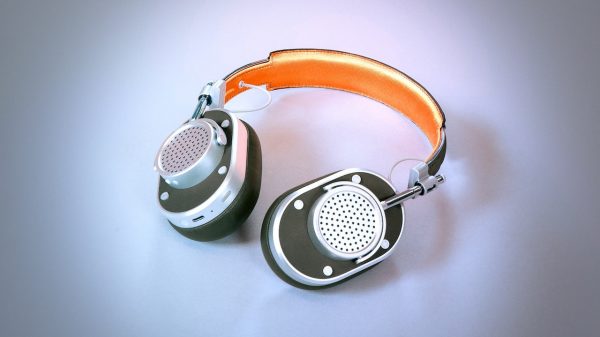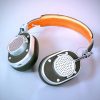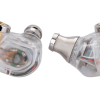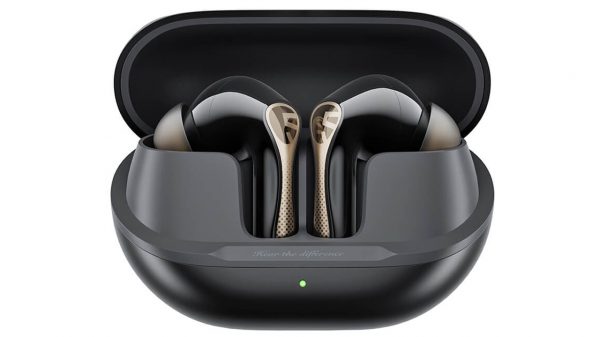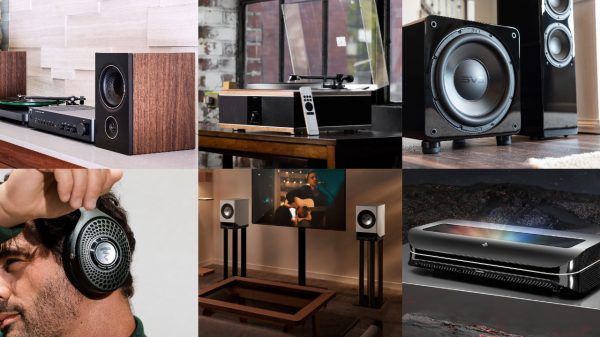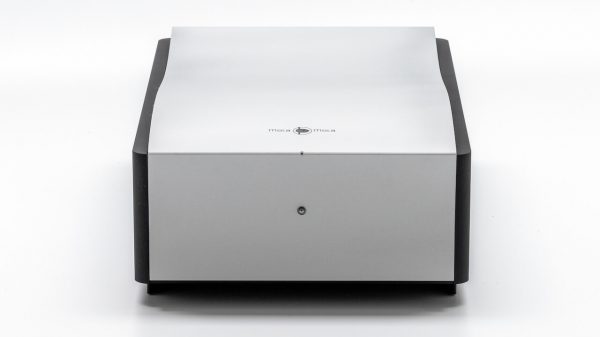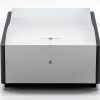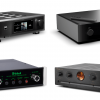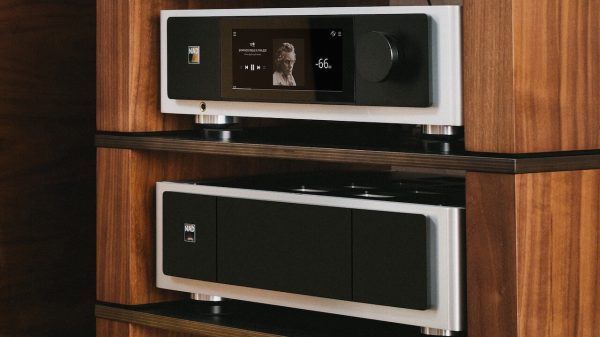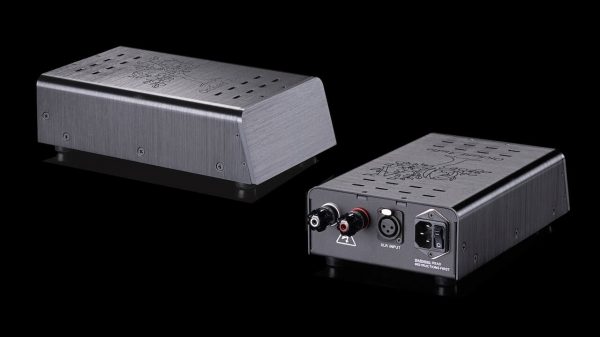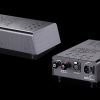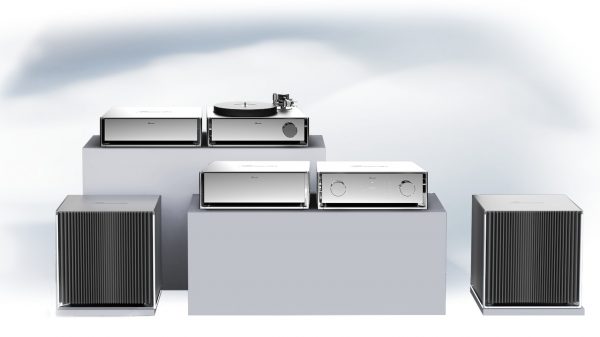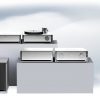Rega’s new flagship Mercury preamplifier and Solis power amplifier are no longer the worst-kept secret in British hi-fi. The company has been parading prototypes at shows for the past year — our folks overseas saw them at the Bristol Hi-Fi Show back in February, where they looked suspiciously like something Baldrick might call “a cunning plan” but forgot to explain the plan part.
Now it’s official: the Mercury and Solis are shipping to UK dealers, priced at £6,950 each (£13,900 for the pair), with US buyers staring down $10,495 per component and Australians bracing for AU$14,500 apiece.
I’ve been a Rega customer since 1998. I lived with a Planar 3 long enough to consider it a dependent, was one of the first journalists to review the original Planet CD player, and we’ve given Rega so much coverage over the last five years that they probably owe us a Christmas card by now. And they’ve earned it — this is a great British company that built its reputation by not chasing the industry’s worst impulses.
While others abandoned physical media, Rega kept making CD players. While vinyl was allegedly dead, Rega quietly sold tens of thousands of turntables. The Brio, iO, Elex, and the rest of the integrated-amp lineup? Rock-solid, sensible, and consistently underrated.
Which is why this move feels… puzzling. A £14,000 pre/power combination — the most expensive gear they’ve ever produced — at a time when the market is screaming for a truly modern Rega network amplifier that punches like the old Brio but streams like a 2025 product should. Instead, we get high-ticket separates, five-figure turntables, and a growing crop of flagship phono stages and CD players. Brilliant engineering, no doubt, but strategically? It feels a little Blackadder Season 3: elegant, ambitious, and delivered with flair… but also a little out of touch with what the common folk actually need.
Rega is positioning the Mercury and Solis as the crown jewels of everything they’ve learned in nearly forty years of building solid-state electronics. The pitch is simple: no shortcuts, no gimmicks, just the cleanest, most transparent signal path they’ve ever engineered. Whether the market asked for that is another discussion — but technically, these are the most ambitious boxes Rega has ever rolled out.
Mercury Preamplifier

The Mercury preamplifier is built around an ultra-quiet architecture designed to push the noise floor so low you’d need a flashlight to find it. That gives the circuit room to breathe, letting low-level detail and dynamic swings come through without the usual haze. Rega says the basic DNA goes all the way back to the original Elicit from the ’90s, but this isn’t nostalgia — this is the most complex electronics platform the company has ever put on a circuit board.
It’s a fully discrete, fully symmetrical layout, engineered to keep distortion out of the conversation. Several ideas were borrowed from across the current Rega lineup: it uses the same high-precision volume control found in the Osiris, and the analogue filter stages after the DAC borrow heavily from what Rega developed for the Saturn CD player.
The goal is to keep the entire analogue path after conversion perfectly balanced from end to end — a straight, symmetrical shot from DAC output to preamp output with nothing getting in the way.

Rega built the Mercury around a fully discrete, fully symmetrical amplifier architecture. The entire signal path is differentially driven, using a high-linearity, wide-bandwidth common-base design. Each gain stage includes a high-current Class A output section, giving the preamp enough voltage and current capability to keep distortion extremely low even under more demanding loads. Critical stages use Linear Systems ultra-low-noise FETs in a differential quad arrangement—similar to what Rega employs in the second stage of the Aura MC phono preamp.
Volume control duties fall to the familiar Alps Blue Velvet RK27 (also used in the Osiris), but here it’s paired with symmetrical common-base driver stages and DC-coupled outputs. Rega has added DC protection so the design can avoid coupling capacitors without risk.
Power comes from a generously specified toroidal transformer feeding a discrete, symmetrical tracking supply. Fast diodes, low-noise references, and localised capacitance for each stage keep the rails stable. Rega also runs the Mercury at a higher supply voltage—roughly 60 percent higher than what you’d expect from a typical preamp—to expand headroom.
Balanced inputs and outputs use the same discrete, symmetrical driver circuitry. Polypropylene and high-grade audio capacitors are used where required, and relay switching is employed for input selection.

The headphone circuit received specific attention: it’s essentially a scaled-down Solis output stage, using the same symmetrical common-base topology. It carries enough voltage and current to drive both low-impedance and high-impedance headphones without strain.
Digital connectivity includes an asynchronous USB input that’s galvanically isolated and powered separately. Re-clocking is extensive for both PCM and DSD, with two dedicated low-jitter oscillators covering professional and consumer sample rates. S/PDIF is handled by a Wolfson receiver and PLL, with careful management of clock recovery and data integrity.
Its digital section is built around Wolfson DACs, supporting up to 24-bit/192 kHz PCM and DSD64 over the available digital inputs.The post-DAC stage is a fully symmetrical analog filter and amplifier section using Linear Systems FETs in the input stage, keeping the analogue topology consistent from input to output.
The Mercury includes five RCA line-level inputs, dedicated record in/out loops, a pair of RCA preamp outputs, and balanced XLR inputs.
The Mercury’s headphone amplifier has enough voltage and current on tap to handle a wide range of headphones. It delivers 9 volts and 2.5 watts into a 32-ohm load at 0.1% THD+N, and 10.85 volts with 0.5 watts into 240 ohms at the same distortion level.
The chassis measures 435 × 97 × 380 mm (17 × 3.8 × 15 inches) and weighs 14 kg (31 pounds), giving it the same physical presence as a compact power amp rather than a lightweight preamplifier.
Solis Power Amplifier
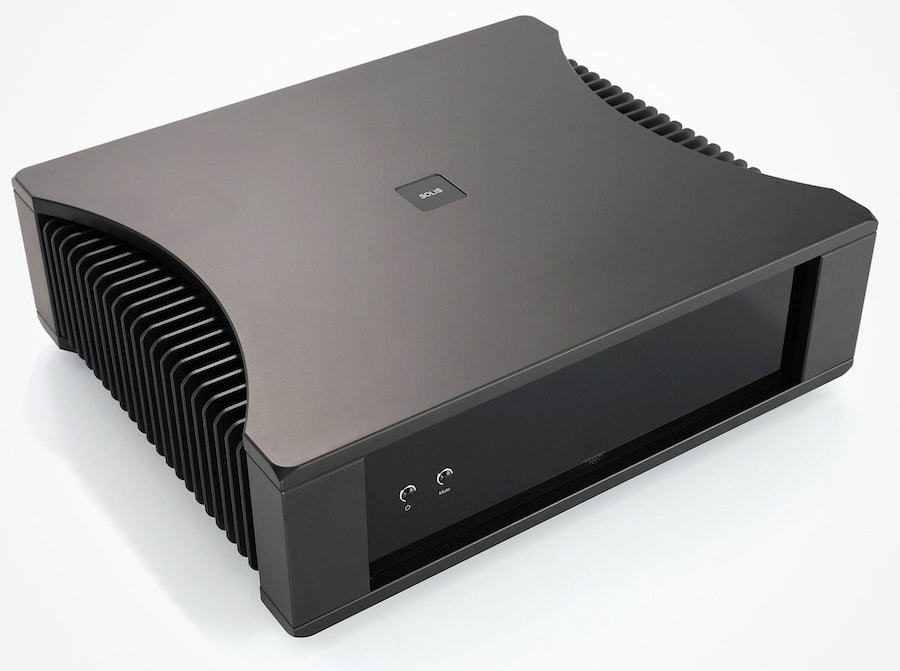
The Solis is built around the same design philosophy as the Mercury: a fully discrete, fully symmetrical signal path with differential drive throughout. Rega uses a common-base, wide-bandwidth driver stage to keep distortion low and maintain linearity even when the amplifier is pushed hard. The input section is a cascoded differential design with LED-referenced current sources, while feedback and bandwidth components are tuned to keep low-frequency behaviour tight and controlled.
Rega specifies Nichicon audio-grade capacitors for key bypass and decoupling points, with additional polyester bypassing where needed, and uses non-inductive HTR resistors in the output stage.

Output duties fall to twelve Sanken 130-watt, 15-amp transistors arranged as a triple high-current stage—six devices per channel—giving the Solis enough current to handle difficult loudspeakers without drama. Power is rated at 168 watts per channel into 8 ohms, rising to 305 watts into 4 ohms.
Two custom 330VA toroidal transformers supply the rails; both use bonded-core materials to reduce mechanical noise and cope better with asymmetrical mains conditions. Each channel has 40,000 µF of Rega’s K-Power capacitors for smoothing, ensuring the supply can deliver the current needed to nearly double output into a 4-ohm load.
Connections include balanced XLR and unbalanced RCA inputs for pairing with the Mercury or the Aethos. Protection includes short-circuit, thermal, and DC safeguards, along with a user-selectable standby mode, independent mute, and a 12V trigger. It also carries Rega’s lifetime warranty against manufacturing defects.
The Solis is rated at 168 watts per channel into 8 ohms and 305 watts into 4 ohms at 1 kHz with 0.1% THD, with an overall gain of 33.3 dB. Its chassis measures 435 × 140 × 385 mm (17 × 5.5 × 15 inches) and weighs 24.8 kg (54.7 pounds), giving it the footprint and mass you’d expect from a high-current stereo power amplifier.

The Bottom Line
With the Mercury and Solis, Rega has effectively built the top floor of its electronics tower—an ultra-quiet, fully discrete preamp and a high-current power amplifier designed to deliver what could very well be the “Most Metal Ever” sound Rega has ever produced (cue Eddie Munson on the roof of the Upside Down, shredding Master of Puppets to buy the band more time). The engineering is serious, the execution is meticulous, and there’s no question the pair could represent the peak of Rega’s solid-state work.
But here’s the part nobody wants to say out loud: if you want the full Rega flagship experience, you’re not stopping at $21,000. You’ll be adding the Aura MC phono stage for vinyl, the NAIA if you want Rega’s current reference turntable, and either the ISIS or Valve ISIS for CD playback. Before you’ve even chosen speakers—or cables—you’re staring at a package that creeps toward $50,000. That’s an impressive monument to Rega’s engineering history, but it also puts their “flagship system” in direct competition with companies that have spent the last decade moving sharply toward all-in-one streaming amplifiers and modern signal paths.
And that’s where this becomes strange. Rega’s loyal audience—the same people who’ve been buying Planar 3s, Brios, and iOs for decades—aren’t waiting for a $14,000 preamp and a 300-watt power amp stack. They’re waiting for a Rega network amplifier. Something that feels like an Elex-R or Aethos but with real streaming architecture, modern control, and the same “plug it in, play music, don’t overthink it” experience that made Rega such a beloved brand in the first place.
It’s not that Mercury and Solis won’t be exceptional. They probably will be. Rega is too disciplined—and too stubborn in the right ways—to release something half-baked. But the timing feels odd. The rest of the market is sprinting toward powerful, quiet, one-box solutions that combine DACs, streamers, room correction, wireless integration, and enough power to lock down almost any loudspeaker. Rega, meanwhile, is leaning into a very old-school high-end playbook: separates on separates on separates.
Maybe there’s a streamer coming. Maybe there’s a modern network amplifier waiting in the wings. But right now, the brand that made its name by refusing to be like everyone else suddenly looks like it’s chasing a tier of the market its own customer base didn’t ask for. Loyal Rega buyers wanted a forward-thinking integrated solution. Instead, they got a $50K stack that feels more like a museum piece than a response to how people listen in 2025.
For more information: rega.co.uk/products/solis-power-amplifier | rega.co.uk/products/mercury-pre-amplifier
Related Reading:
- Rega’s Brio MK7 Integrated Amplifier Delivers Almost Everything You Might Need For Around $1,100
- Rega’s Nd7 Flagship MM Cartridge Might Have You Rethinking An Expensive MC Cart
- Rega’s Naia Is The Turntable Roy Gandy Always Wanted To Create

